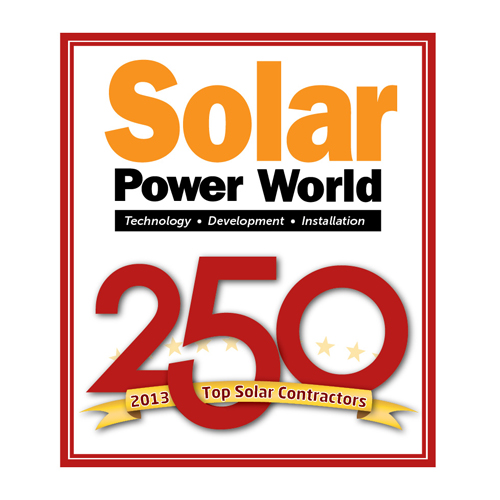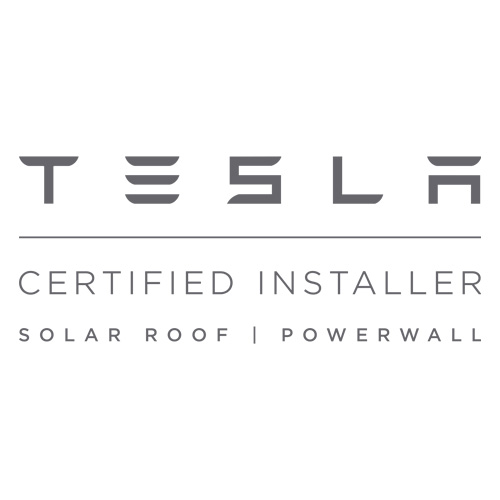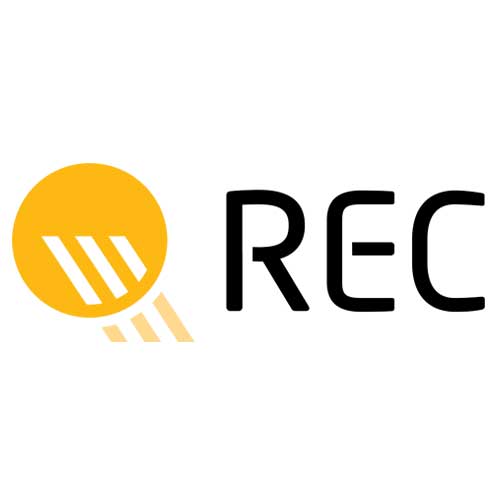What Happens When Rain Falls On Solar Panels?
When the rain falls on solar panels, it can bring with it both benefits and drawbacks. On the one hand, it can help clean off dirt and grime that builds up over time. This can help improve the efficiency of the system by making sure sunlight reaches more of the panel surface instead of being blocked by dirt or dust. On the other hand, too much rain can be detrimental to solar panel performance as they are not designed to handle large amounts of water.
The first thing that happens when it rains on solar panels is that water droplets accumulate on their surfaces. This creates a film that prevents light from reaching electrons in photovoltaic cells, which leads to an immediate decrease in power output. In addition, if there are small particles like dust or debris mixed with the water droplets, this further reduces the amount of light that hits the cell, resulting in even lower power output. In severe cases, heavy downpours can cause flooding on panels leading to permanent damage and failure of components within them.
In order to prevent these issues from arising, experts recommend using a waterproof coating on solar panels or installing a waterproof membrane between their backings and surfaces. This helps keep water out while still allowing light through so that energy production is not hindered. Additionally, proper drainage systems should be put in place so any excess water is quickly removed before it has a chance to cause damage.
1. The Solar Panels Are Designed To Withstand Heavy Rain
With the increasing demand for renewable energy, solar panels have become an increasingly popular choice among homeowners, business owners and industrial institutions. Solar panels are designed to withstand extreme weather conditions including heavy rain, making them a reliable source of renewable energy even during inclement weather.
Solar energy is generated by photovoltaic cells that convert sunlight into electricity. These cells are highly efficient and have a long lifespan when properly maintained. They can stand up to harsh environmental conditions and still produce clean, sustainable power. Solar panels are specifically engineered and constructed to be able to withstand heavy downpours without significant damage or loss in efficiency.
When exposed to heavy rain and constant moisture, the components of solar panel systems become more resistant to corrosion and other damages caused by water infiltration over time. This makes them suitable for use in regions where rainfall is frequent or prolonged throughout the year. The frame of a solar panel system is also designed with special features that allow it to effectively shed water, which helps minimize any potential damage due to flooding or accumulation of standing water on the system after a heavy rainstorm.
Solar systems also undergo rigorous laboratory testing prior to installation to ensure they will be able to withstand various weather conditions including strong winds, hail storms, snow storms and other extreme weather events like hurricanes and tornadoes . This type of testing simulates real-world conditions so that manufacturers can adjust their design accordingly for optimal performance in different climates. In addition, manufacturers typically include warranties on their products so consumers can feel confident that their investment will not be compromised by nature’s wrath.
When Rains Fall On Solar Panels, The Panels Absorb The Water
When it rains, solar panels soak up the water like a sponge. This water will evaporate, releasing heat in the process. If this process happens frequently enough, it can damage the solar panels. However, while water on solar panels will not harm them, it is important to clean and inspect them regularly to ensure that they are performing at their best.
Regularly watering solar panels may actually improve their output – by absorbing rainwater and releasing its energy as heat. This added warmth can help to increase the efficiency of the panel, meaning that your investment in solar technology will be repaid over time. So next time it rained outside – don’t be afraid to give your panels a little TLC!
2. Rainwater Can Actually Help To Clean The Solar Panels
Rainwater can actually help to clean solar panels in a number of ways, and it has become increasingly popular in recent years. After all, solar energy is becoming more and more popular as an alternative energy source, and it’s important to keep your solar panels clean in order to maximize their efficiency. Rainwater has been found to be one of the most effective methods for cleaning solar panels, but it needs to be used correctly in order for it to have the desired effect.
The first way that rainwater can help to clean solar panels is by washing away dust, dirt and other debris that can accumulate on the surface of the panels – this accumulation prevents sunlight from reaching the cells which reduces efficiency. When rainwater falls onto the panels, it carries away this debris which helps keep them clean and allows for maximum sunlight absorption. This process also helps to remove bird droppings or other substances that may settle on top of the panel; these materials contain acids that could corrode the panel over time and should be removed regularly.
Rainwater can also help prevent algae growth on solar panels; when sunlight combines with moisture from water droplets, algae spores are able to survive on surfaces such as photovoltaic cells. Algae can cause many issues with performance due to shading created by its presence as well as discoloration. The acidity levels in rainwater are known to disrupt algal growth so using rainwater regularly will help reduce any potential problems caused by algae or moss growth on your solar panel system.
How Rainwater Can Help Clean Solar Panels
Rainwater can actually help to clean solar panels, and this is an important way for homeowners to maintain their photovoltaic investments. Rainwater contains natural minerals that will help remove dirt and debris from the surface of the solar panel. In addition, the water itself will act as a mild abrasive, helping to loosen any dirt or grime that has accumulated on the panel. Regular cleaning with rainwater can extend the life of a solar panel, helping it last longer and remain more efficient.
One of the biggest benefits of using rainwater to clean solar panels is its environmental friendliness. Rainwater is naturally filtered by air and soil particles before it reaches our homes and businesses. This means that there are few chemical contaminants in it compared to other sources of water like tap water, making it safer for both people and the environment. The natural minerals in rainwater also serve a beneficial purpose by gently removing dirt without damaging the solar panel’s delicate components.
3. Rain Can Help To Cool The Solar Panels
On hot days, solar cells can become too hot to operate efficiently. This is because they absorb the sunlight which warms them up, leading to decreased performance levels and wasted energy. But when it rains, the droplets act like tiny air conditioners for the cells by cooling them off and keeping them functioning at their peak efficiency. Not only does this mean that more electricity is produced from each hour of sunshine, but it also helps prevent damage to the panels due to overheating.
How Does Rain Help To Cool The Solar Panels? When rain falls on a solar panel, a process known as evaporative cooling takes place. The water droplets evaporate into a gas which absorbs heat from the surface of the panel and carries it away with it as it rises into the atmosphere. This process helps to reduce the temperature of the solar panel and allows it to remain operational longer in direct sunlight than if there were no rain at all. It not only helps keep temperatures down during hot weather, but also offers protection against extreme temperatures during cold winter months.
Benefits Of Rain For Solar Panels
There are many advantages associated with using rain for cooling off your solar panels. One of these benefits is increased efficiency since cooler temperatures result in better energy production from each hour of sunshine received by your panel system; another benefit is improved longevity since high temperatures can cause permanent damage over time; finally, regularly cooled panels will be able to perform more reliably throughout their lifespan with lesser chances of malfunctioning or failure due to overheating incidents or other issues related to high temperature exposure.
As you can see, utilizing rainwater for cooling your solar panels can have numerous positive effects on its overall performance and lifespan — allowing you to take full advantage of everything that your system has to offer while minimizing any potential risks associated with extreme temperature exposure or other issues related to excessive heat buildup within the system itself. All in all, implementing this simple yet effective trick will go a long way towards ensuring optimal performance from your photovoltaic array without having to allocate additional resources towards extra upkeep or repairs — making it an ideal solution for anyone looking for an easy yet reliable way of getting maximum use out of their investment in renewable energy sources!
4. Solar Panels Are Still Able To Produce Energy When It Rains
When sunlight shimmers on the panel’s surface, its photovoltaic cells convert light into electricity through a process called the photovoltaic effect. Even when clouds cover the sky and it starts raining, some of this sunlight is still able to penetrate through and reach the solar cells – allowing them to continue to generate electricity. The rain can also help clean off dust and dirt that might have collected on the panels over time which enhances their performance.
The amount of energy produced by solar panels during rain will depend on various factors such as how strongly they are tilted towards the sun or how strong winds there are as well as other weather-related variables. Generally speaking though, solar systems can continue producing at least 20% of their regular energy output even when it’s raining or cloudy outside. Some studies have even shown that depending on certain environmental factors such as humidity and cloud cover intensity – some areas can see an increase in efficiency during rainy days!
The only scenario in which rain could be detrimental would be if the water droplets remained on a panel’s surface for an extended period of time; these droplets act like tiny prisms which diffract sunlight away from the cells instead of towards them – reducing efficiency. However, this effect is temporary since most rainfall is intermittent and evaporates quickly from the panel’s surface due to its high temperature.
Solar Panels Don’t Give Up When It Rains
If you’re like most people, you probably worry about your solar panels during a rainstorm. Solar panels are still able to continue producing power even during rainy days! This means that homeowners who install a residential or commercial photovoltaic system will not need to worry about their system becoming useless when bad weather strikes – allowing them to enjoy uninterrupted access to clean renewable energy throughout each season! Furthermore, thanks to advances in technology – newer models of harnessing solar power are designed specifically with optimizing panel efficiency during wet conditions in mind; making them perfect for anyone living in often-cloudy climates!
5. How To Protect Your Solar Panels When Rains Fall
When it comes to solar panels, rain is definitely a concern. Not only will the rain damage your panels, but it can also lead to bacteria and mold growing on them. In order to protect your solar panels from the rain, follow these simple tips:.
The first step in protecting your solar panels from rain is to install a protective covering over them. A protective covering will help protect your solar panels from direct contact with rainfall, which can cause significant damage over time. The best type of cover is one made of an ultraviolet-resistant material such as polycarbonate or Teflon-coated fabric, as this will prevent sunlight from weakening the material over time. The cover should also have adequate drainage holes so that rainwater can escape easily without pooling on top of the panel. Additionally, make sure that all edges are sealed properly to keep out moisture and debris.
Another way to protect your solar panels from rain is with a rainscreen system. Rainscreens act like a physical barrier between the roof and the panel itself, preventing water droplets from hitting the panel directly. These systems consist of a frame mounted on top of the roof and covered with mesh or perforated metal sheets that allow air circulation but keep out large drops of water that could potentially damage the panel surface. Additionally, some systems come equipped with sensors that detect moisture levels in order to activate an automatic shut-off when needed.
In addition to these measures, it’s also important to regularly inspect and maintain your solar panels after heavy rains or storms have passed through your area. Look for signs of water damage such as discoloration or corrosion around electrical connections and any damaged parts should be replaced immediately before further damage occurs due to prolonged exposure to water or moisture build-up within the system itself. Additionally, cleaning off dirt or debris if necessary after each storm event will help minimize any potential damage caused by damp conditions over time.
Few things to keep in mind to protect Solar Panels
If you live in an area that experiences rainfall, it’s important to take precautions to protect your solar panels. Solar panels are sensitive to water, and even a small amount can cause damage. When rains fall on solar panels, the water can seep into the cells and corrode them. This process is called water ingress, and it’s a common problem with solar panels.
To avoid water ingress, you should cover your solar panels with a tarp or other waterproof material when rains are predicted. This will help to keep the cells dry and protected from damage. You also need to move your panels to a protected area – either inside or outside – during rainstorms. Make sure that your solar panel installation is situated in an area that receives plenty of sunlight so that it can generate energy efficiently.
Once rains have stopped, it’s important to check for any damage done to your solar panels. Check for signs of water ingress such as corrosion or pitting on the surface of the cells. If there is any damage, you will need to replace your solar panel system entirely. Finally, be sure to check weather conditions before taking any action related to protecting your solar panel system – this includes checking for warnings about flooding or high winds. When all else fails, always inspect your solar panels after a storm has passed just in case there was any damage done during the storm!
6. Solar Panels Are Designed To Withstand Heavy Rain And Can Still Produce Energy
If you’re looking to invest in renewable energy, look no further than solar panels. Solar panels are a great way to produce power without using any fossil fuels. They work even when it’s raining, and they can be installed on just about any type of roof. Plus, they’re a great way to reduce your carbon footprint.
However, solar panels are not immune to the elements. When it rains, the panels will be wet and less efficient. In fact, the efficiency of the solar panel will be reduced by about 25%. Nevertheless, some power still may be produced. Keep in mind that this is only an estimate – actual results may vary depending on the specific location and weather conditions.
If you live in an area that often has rain or heavy rainfall, consider buying solar panels as an investment. Not only will you save money on your electricity bills (due to lower rates), but you’ll also help reduce greenhouse gas emissions from fossil fuel use.
Solar Panels Can Still Produce Electricity When It Rains
Solar energy has become an increasingly popular energy source due to its renewable and cost-effective nature. Solar panels are specifically designed to capture the energy from the sun’s rays, and convert it into electricity. But one question that often arises is whether solar panels can still produce electricity when it rains? The answer is yes, solar panels can still produce electricity when it rains, although the amount will be lower than when the sun is shining brightly.
When it comes to generating electricity from solar power, there are two types of systems: direct current (DC) and alternating current (AC). DC systems use photovoltaic cells that directly convert sunlight into electrical energy, while AC systems rely on an inverter to convert DC voltage from the solar panel into AC voltage for consumption. With either system, rain does not affect the production of electricity directly as long as there is some remaining light visibility. This means that if there is a light drizzle or mist in the air, enough energy will be created by the photovoltaic cells to generate power.
However, even in these conditions, electricity generated by a solar panel during rainfall will be significantly lower than on sunny days due to decreased visibility of sunlight. When there is heavy rain or hail covering the entire area around the panel, then no electricity will be produced at all because completely blocking out all visible light prevents any usable energy from being captured.
In Short
In conclusion, while rain does have an effect on solar arrays it doesn’t necessarily need mean complete shutdown anytime it starts raining outside – especially with many advancements made over recent years in terms of materials design and production processes used in manufacturing solar equipment today which has enabled systems designed around these new standards much better able withstand wet weather while still providing satisfactory performance levels under most typical operating scenarios encountered during operation throughout typical calendar cycles from season-to-season year after year with minimal maintenance required over extended periods between periodic inspections/service intervals for optimal sustained results moving forward throughout their expected lifespan(s).









